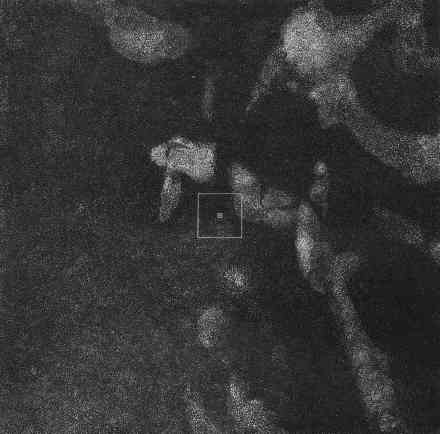| 21. |
We have now jumped so high that we have come out of the complex of stars to
which our solar system belongs, and which we can see on a clear starlit night
as a faintly lighted strip right across the sky: the Milky Way. it is usually called
the galactic system and contains many thousand millions of stars. The sun is only
a very unimportant one of these, and it is situated not in the center but in the
outskirts, which we see in the above drawing. In the tiny square we notice that
the sun and its 37 neighbor stars, which in #20 filled the small square, have
now become but one dot. The other stars are huddled together in irregularly
formed groupings, in which we can hardly discover any clear shape or line. We
shall need t@ make another jump to discover the general form of the galaxy
and of the formation of stars nearest to the sun.
|
1 cm. in picture = 1021 cm. = about 1,000 light-years. | Scale = 1:1021 |
|
